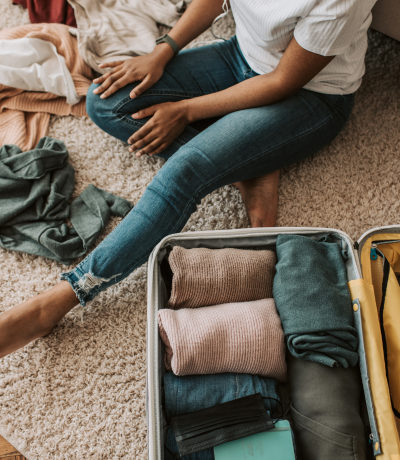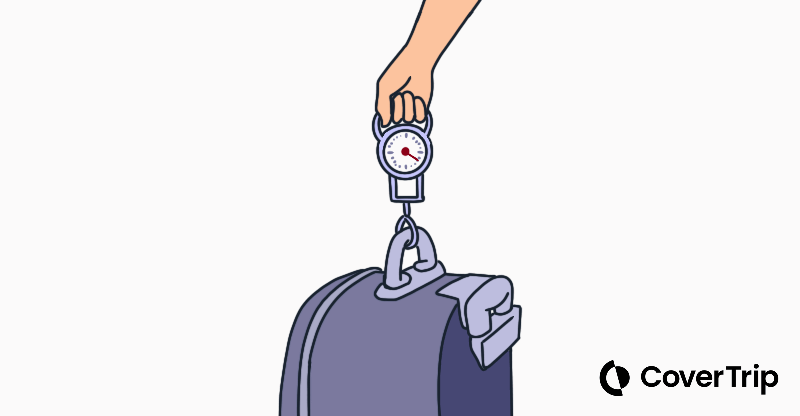You can apply the 80/20 rule to packing—here’s how
7 June 2024
There’s an art to traveling light and so many reasons to do it. You can move through the airport more quickly and easily, carry your bag without straining your body, and even walk up the stairs in those quaint hotels that lack elevators.
Plus, you’ll save a lot of money.
One by one, the major US airlines have quietly increased their checked bag fees. These are the current fees for checking bags with each major US airline in 2024:
- Alaska Airlines: First bag $35; second bag $45
- American Airlines: First bag $35-$40; second bag $45
- Delta Air Lines: First bag $35; second bag $45
- Hawaiian Airlines: First bag $25-30; second bag $35-40
- JetBlue Airways: First bag $35-$45; second bag $50-60
- United Airlines: First bag $35-$40; second bag $45-50
- Southwest Airlines: Each passenger gets two checked bags for free
Even low-cost airlines like Frontier charge a bundle per bag. You’ll pay between $48 and $98 to check a bag on that airline.
The surest way to avoid baggage fees is not to check a bag at all. If you’d like to start saving money by packing light, I recommend applying the 80/20 rule, also known as the Pareto principle.
Here’s how to pack light with this rule.

First, choose a bag that makes packing light easy
Consider this an important investment. The most common size for carry-on luggage is 22 x 14 x 9 inches, including wheels and handles, although a 24-inch bag fits in most overhead bins.
The ideal bag will have these features:
- interior and exterior pockets
- straps to tighten the contents
- strong zippers
- handles on the top and sides
Measure your bag and check the airline’s website to make sure it will fit in the overhead bin or under the seat.
Apply the Pareto principle to packing
The Pareto principle says that 80% of the results come from just 20% of your effort. Just like 80% of a test will probably be based on 20% of the basics you studied, 20% of your stuff is probably used 80% of the time.
We are all creatures of habit, and we like consistency. On any average day, when you pick out what to wear, you likely reach for the same few items.
The same is true when traveling, in fact, even more so because you’ll likely be discombobulated by the new environment, weather, sounds, etc. In situations that are even lightly stressful or exciting, having familiar items is comforting and empowering.
- Prove the theory by tracking what you reach for and use every day for a few weeks before your next trip. Your list should include the clothes, products, and supplements you use every day.
- Review the planned activities on your trip. If they’re drastically different than what you do on an average day, you may need to pack a few extra items. For example:
- If you’ll be doing a lot of walking, you’ll need to take a good pair of walking shoes.
- If you’ll be going out to fancy dinners, you’ll need one nice outfit.
- If you’ll be doing any sports, like skiing or snorkeling, you’ll need clothing for that.
Everything else is extra – leave it at home.
Limit the items you pack to these 4 categories
Pay attention to the percentages here.
Travel documents and essentials – 5%
These are the things you need to get there, to have a place to sleep, purchase food, and get you home. These are:
- ID and passport (if traveling internationally)
- Cash (local and US)
- Credit cards
- Printed itineraries
Separate your cards and cash into two piles: what you need daily and the backup. Put the backup in a plastic zippered bag in the suitcase’s liner.
Clothing – 20 to 50%
Take enough to stay warm or cool:
- 2-3 pairs of bottoms and tops (pants and shirts, skirts and tanks, etc.)
- 1 pair of athletic or walking shoes
- 1 pair of sandals or flipflops
- 1 rainproof jacket appropriate for the local temperature
The jacket should have zippered pockets, preferably on the inside, where you can store your passport and ID safe from thieves.
If you’re having trouble with that limited amount of clothing, remember this: no one cares if you wear the same thing over and over, especially if you’re moving to a new place every couple of days!
I appreciate people who take care to present themselves well, don’t get me wrong, but you can do that with 2-3 options and save yourself a lot of trouble. If you really want one more piece, wear it to the airport.
Personal products – 10 to 30%
These will include basic toiletries and medications like these:
- Toothpaste and toothbrush
- Comb or hairbrush
- Makeup
- Daily medications
- Vitamins and supplements
Unless your plane is landing in a very remote place or you have specific allergies, you don’t need to pack soap, shampoo, or body wash. Hotels and rentals have that – save your space.
Get travel-size bottles for the liquids you need. Just make sure they fit the TSA requirements (3.4 ounces or less per container), as you’ll have to go through security with them.
Gadgets – 20 to 50%
Tech is heavy, so try to limit yourself to what you will really use. Your list may include:
- Laptops or tablet (if you’re not doing work, leave the laptop)
- Camera (if not using your phone)
- Phone
- Related chargers
- If traveling abroad, one universal adapter
If you use your phone to take pictures, leave the camera at home. If you’re not working, leave the laptop at home. You get the idea.
More packing light tips
- Packing cubes are your friend. They not only keep your stuff organized but also make it easier to pack light by compressing the items.
- Plastic zippered bags are also your friend. They are light and waterproof, great for carrying daily vitamin packs or printed documents or for protecting your clothing from leaks. Stuff that wet swimsuit into one on your way home.
- Pack what you won’t miss – like that super faded t-shirt – and throw it away when you’re on your way home.
It’s empowering not to have to worry about whether your bag will arrive or whether you can get it up to that fifth-floor apartment you rented in Paris. The things that get you out the door on your way to adventures are all very light if you choose wisely.
Related topics
Damian Tysdal is the founder of CoverTrip, and is a licensed agent for travel insurance (MA 1883287). He believes travel insurance should be easier to understand, and started the first travel insurance blog in 2006.
